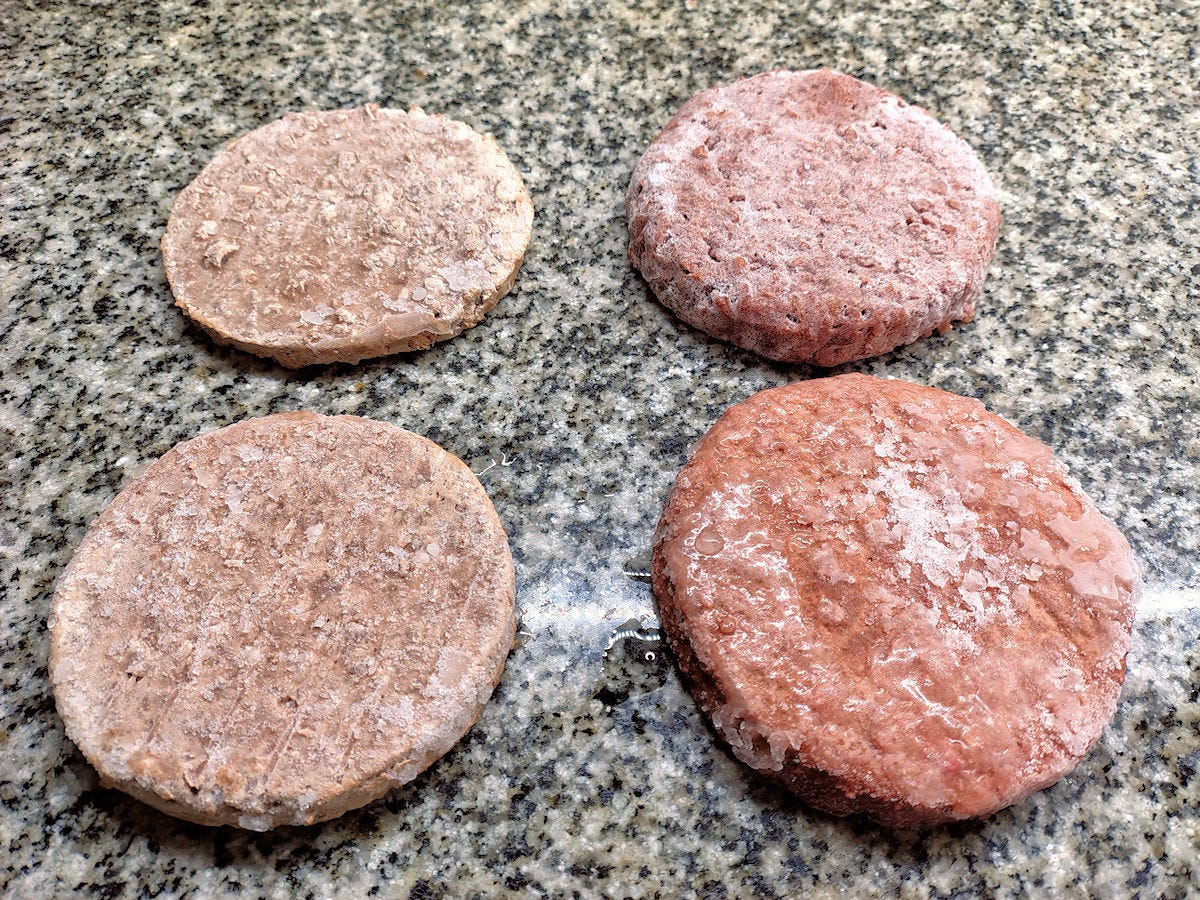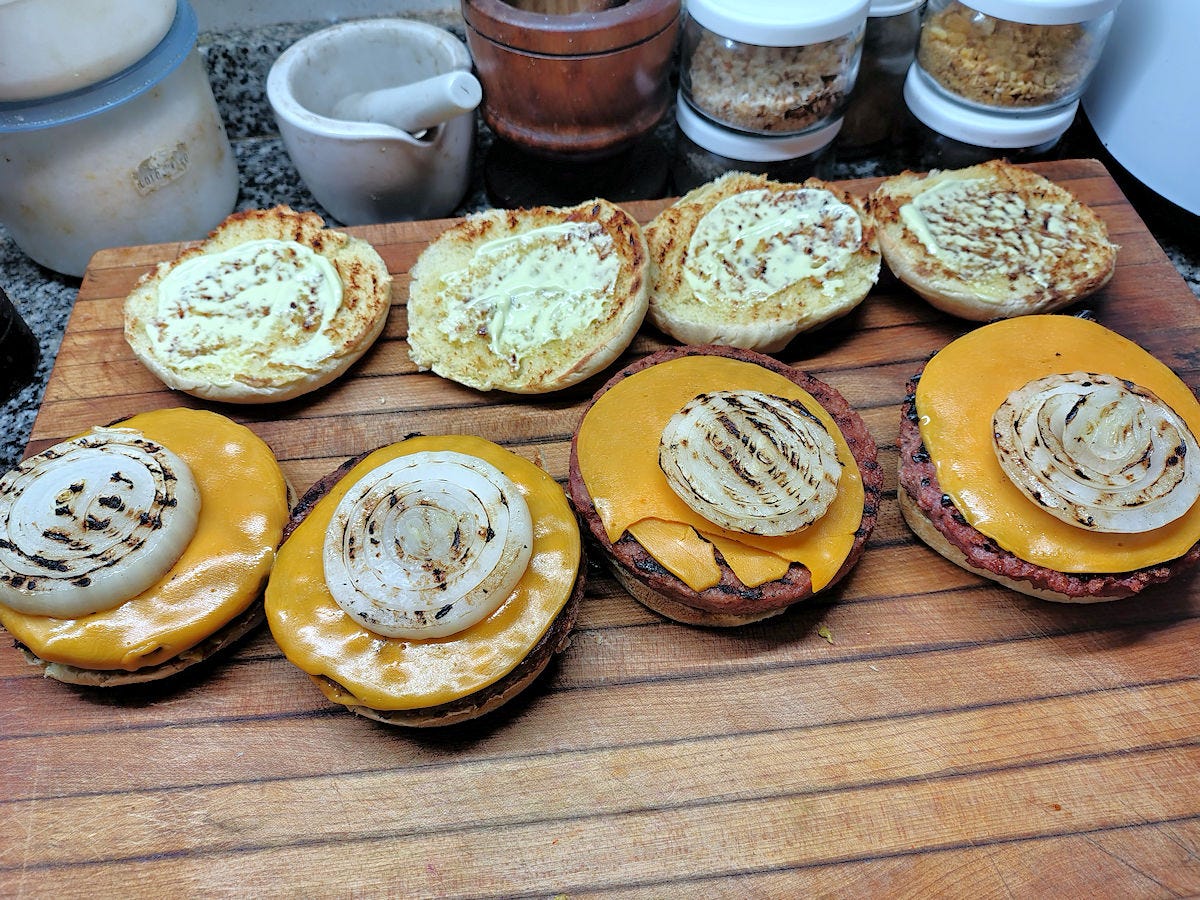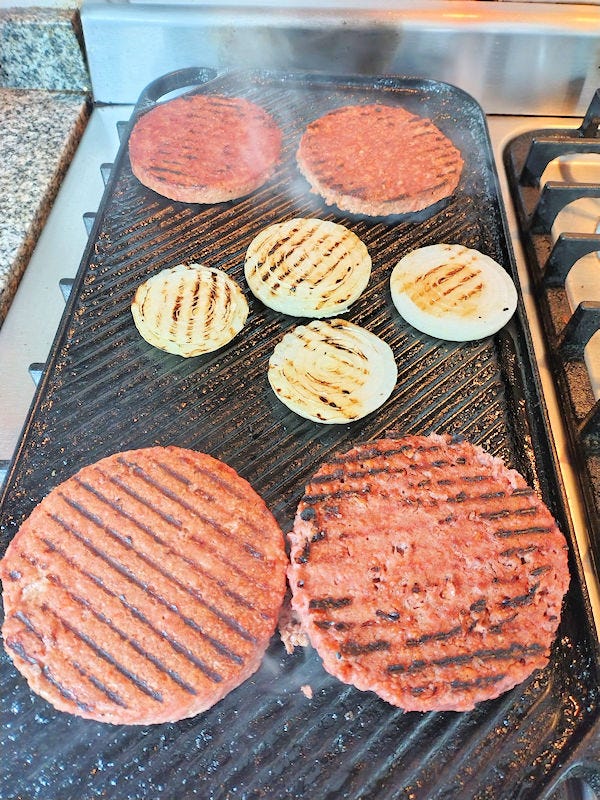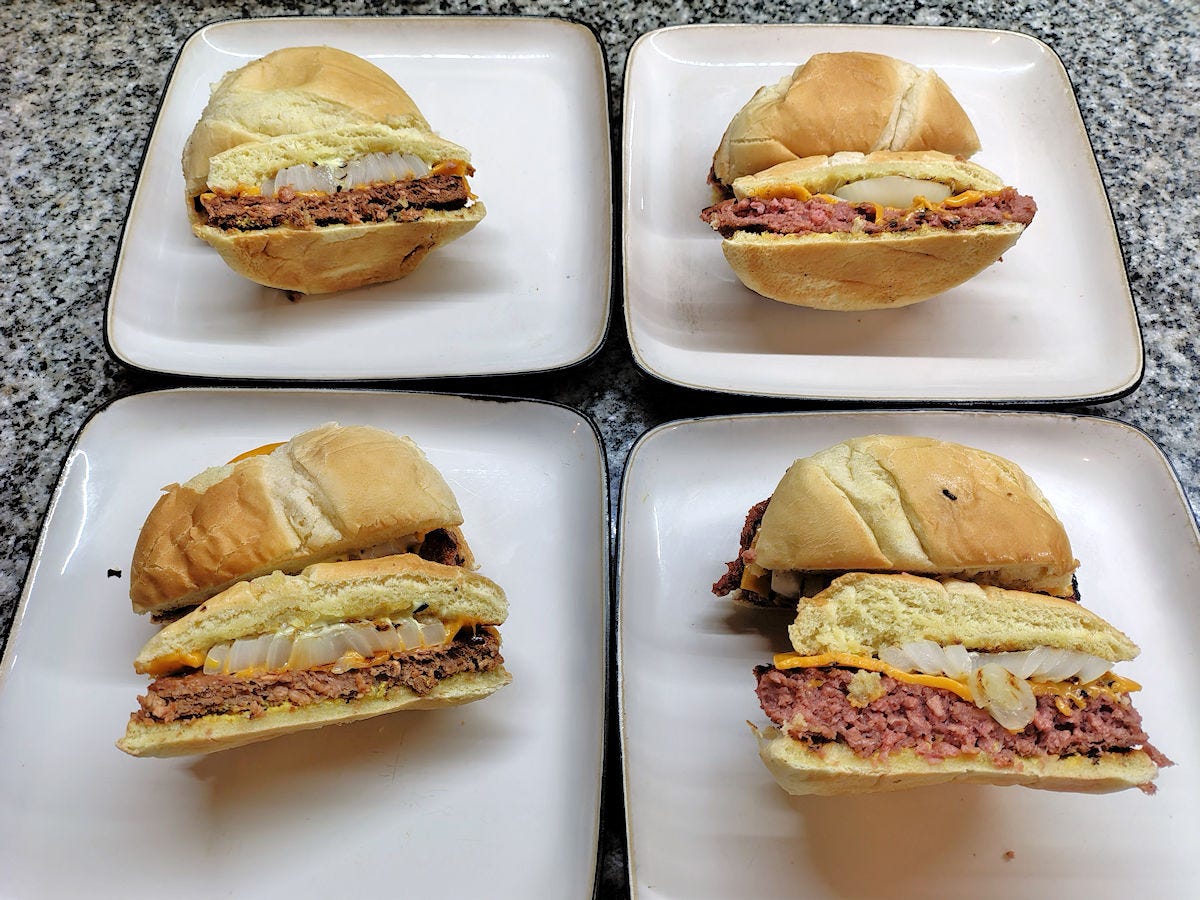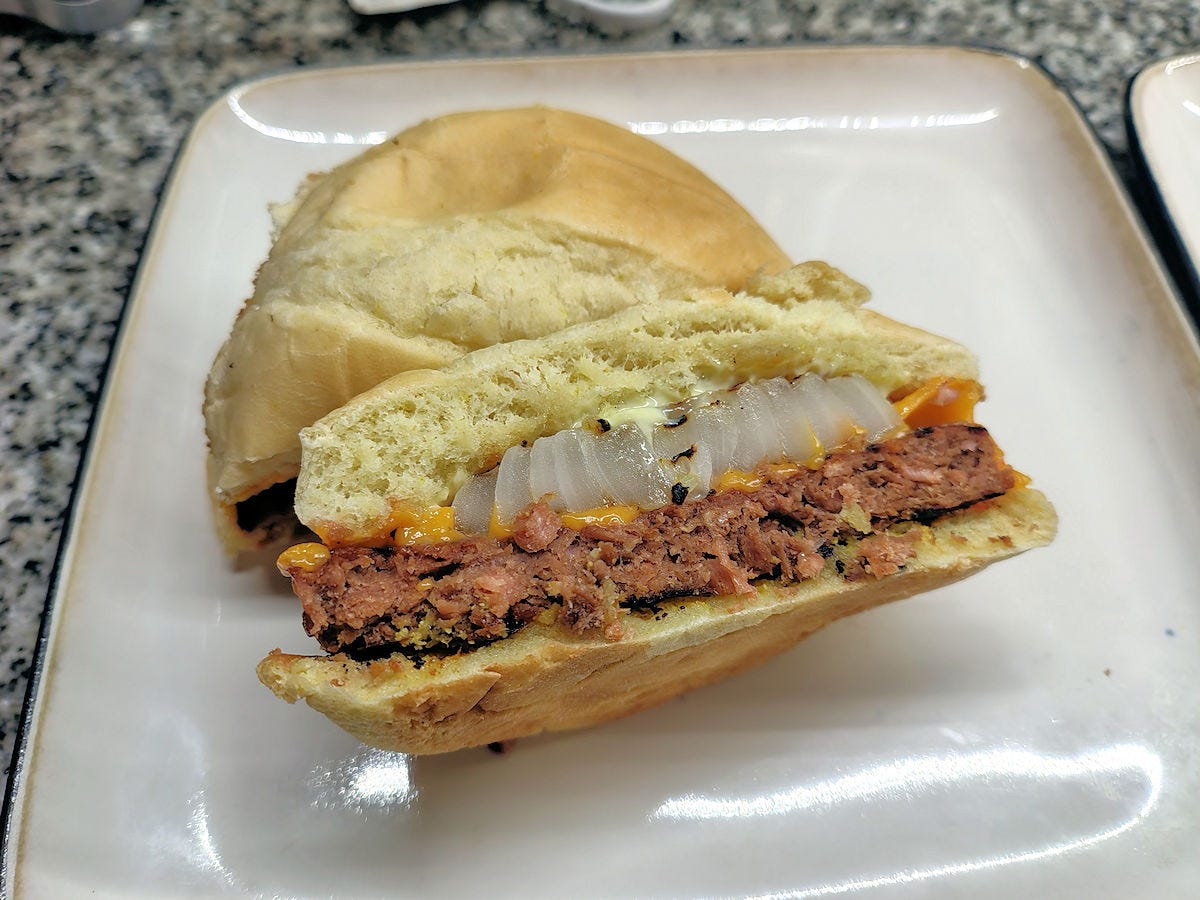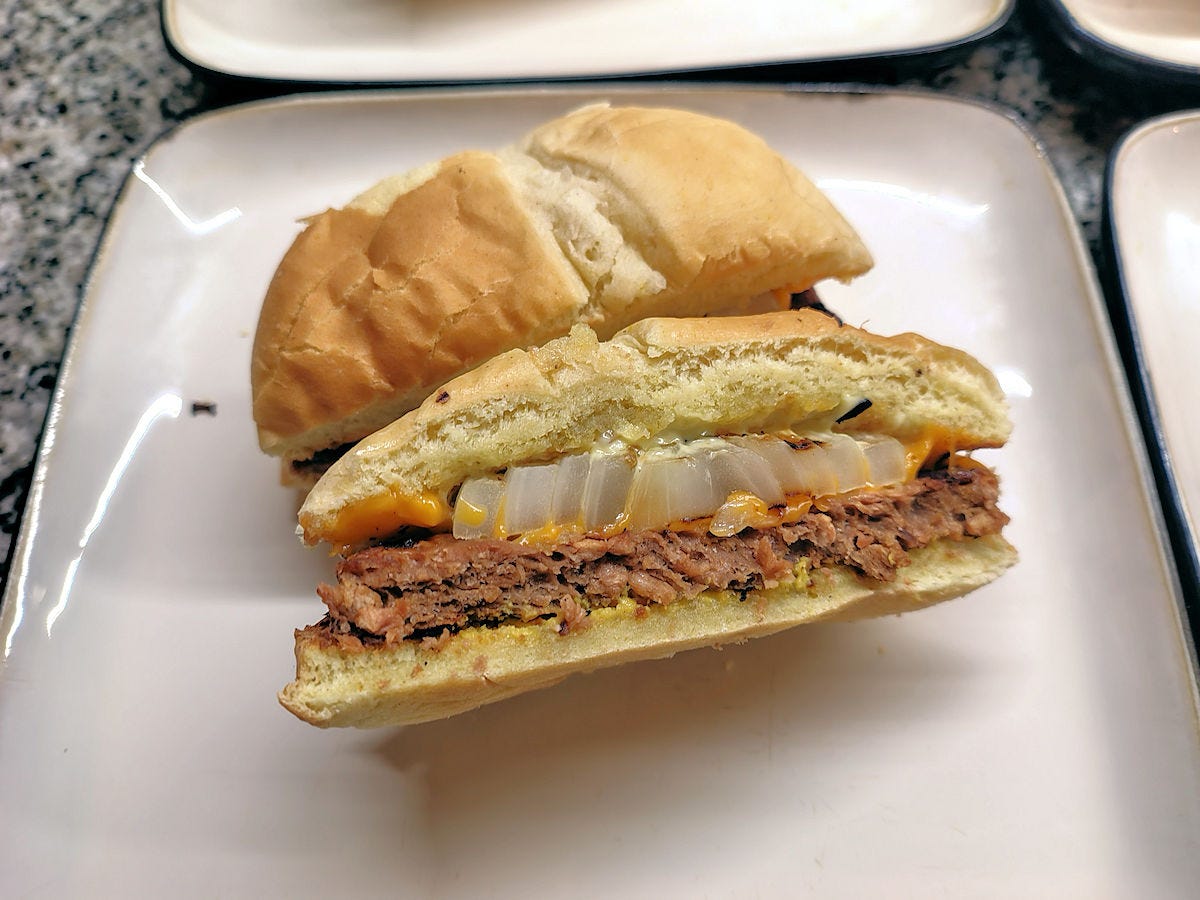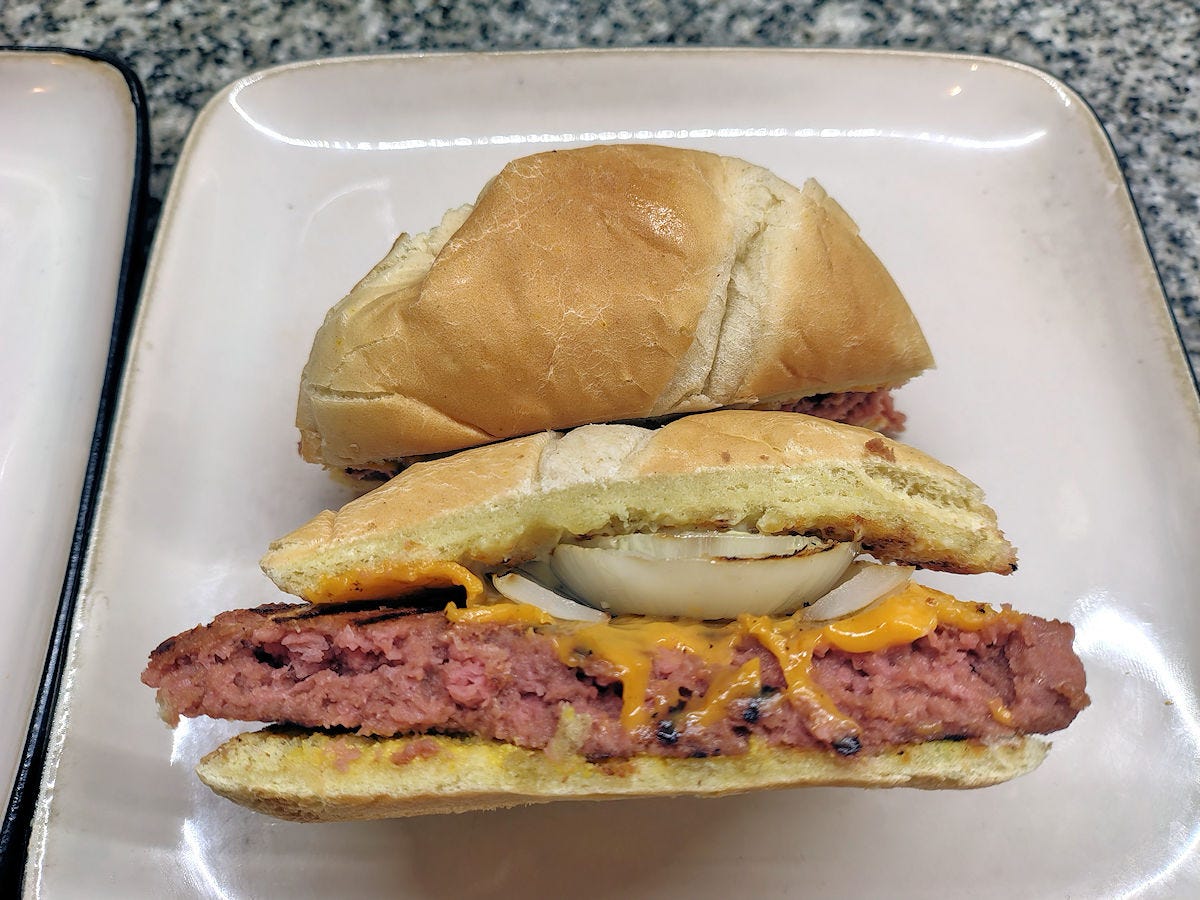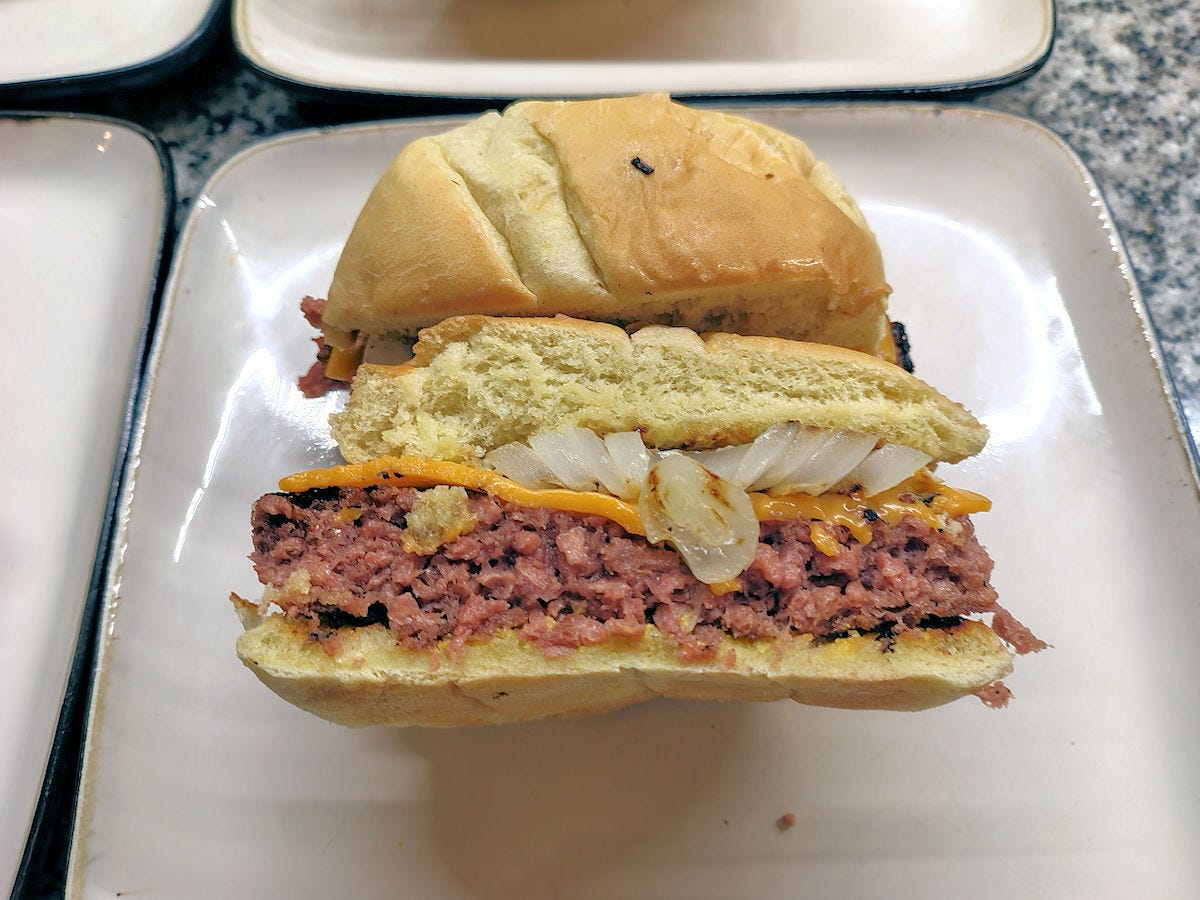A Return, of Sorts, to V-Burg
"Don't eat anything your great-great grandmother wouldn't recognize as food." - Michael Pollan, author
Many moons ago, like a dozen years or so, one of the projects I undertook was trying out the various veggie-burger offerings at restaurants around the city. While in today’s food landscape they can be found at practically every burger place, café, and even old school bodegón, that was not true then. It was an effort to even come up with the fewer than a dozen spots that offered them. And most of them were pretty insipid - often not really anything more than a fried patty of rice or lentils, with a sparse scattering of grated vegetables in them. If I recall correctly, the only place that was really making a burger out of vegetables themselves was Hard Rock Café.
I spent some time trying out various veggie burger recipes myself, much of it focused on working my way through the still canonical (and now its second edition) Veggie Burgers Every Which Way by Lukas Volger.
What I never did, during that period, nor since, was delve into the brave new world of ultra-processed burger patties meant to mimic meat. There were always plant based “burgers” available here - but often they were little more than something more like a milanesa - some sort of vegetable and/or grain combination, often coated in breadcrumbs, and only resembling a burger in that it was puck shaped.
Now, we don’t, as best I know, have easy access to the two big name brands that seem to have dominated the faux burger market in the US - Beyond and Impossible. I have, on occasion, seen them, but they’ve been as ultra expensive as they are ultra processed, and most folk here probably wouldn’t encounter them, nor buy them if they did. I decided, for some odd reason that veers off of “fresh ingredients” cooking, to do a comparison of the big brands here that are available in the major supermarket chains.
Having checked the frozen food aisles at the big supermarket chains here, I found only three brands that offer a burger that’s billed as being a faux meat burger, as opposed to simply a vegetable patty. NotCo offers up three different versions - their original, their 2.0, and a parrillero, or grill master, burger - I grabbed the first two, figured I could always add in the other later if these were worthwhile. They also offer up a range of other products - faux chicken, meatballs, empanadas, sausages, and vegan ice cream and dulce de leche. D’Raiz also produces a variety - focusing mostly on things like burritos, meatballs, and faux chicken, and comes in with a single burger offering, in two sizes - 80 or 120gm. And third, Plant Based Foods S.A. has a wide range of products under their Wanna V and Veg Abundancia lines, most of them various forms of milanesa, a couple of bean burgers, and one faux meat burger.
Given the whole save the planet motif, I’m a little surprised that all three use plastic packaging - including the one in the box, there’s just a plastic envelope inside it.
On the left, the two versions from NotCo - the original is a 113gm patty, and although the angle makes it look thinner than the 2.0, which is 120gm, it’s actually thicker, just smaller diameter. They’re both a kind of unappealing grey brown color. On the other hand, the other two both seem a bit more meat-like. The D’Raiz, in front, is maybe a bit orange-ish in color. The Wanna V burger is the only one that truly looks like meat - both in color and visual texture.
My intent was to treat them all the same, and even give them a proper burger boost. I toasted potato buns, then slathered the two sides with a good mustard and mayo. I grilled slices of onion. And, added in an American style cheddar slice at the end. They all come with instructions to grill them between 5-7 minutes, so I aimed for around 3-4 minutes on each side.
And, meant to put these back in the same order, but just realized that I reversed the two on the right, which both look more appetizing than the ones on the left. So that puts the Wanna V in front and the D’Raiz in the back right.
The first one is the NotCo original. It has the longest list of ingredients: water, pea protein, sunflower oil, pea and rice protein concentrate, coconut oil, natural flavors, dried yeast, methylcellulose, alkaline cocoa powder, pea fiber, beet juice powder for color, bamboo fiber, salt, spinach powder, vitamin and mineral blend (potassium chloride, magnesium oxide, niacinamide (vitamin B3), thiamin hydrochloride (vitamin B1), copper sulfate, pyridoxine hydrochloride (vitamin B6), folic acid, cyanocobalamin (vitamin B12)).
Whew! That one needs the FedEx terms and conditions guy to read it out loud. Now, there’s not much there that I’d be concerned about ingredient-wise. Most of it is pretty natural stuff, albeit processed into powders and concentrates. There’s an awful lot of fiber in the mix though - from peas, bamboo, and cellulose. And of particular note, in all of these burgers, is the methylcellulose - derived, variously, from cotton or flax seeds or grass. It’s used as an emulsifier, but in the body tends to cause bloating and is a “bulk laxative”.
What stands out for me immediately in the flavor is the cocoa. Basically this tastes like earthy beets and cocoa. There’s a hint of coconut in the background, and you can kind of taste the peas - though I’m not sure I’d have specifically identified peas, rather than just “something green tasting” without having known what was in it. It’s a bit dry, but no more so than a burger cooked medium well. It’s perfectly edible, but nothing about the texture or flavor says “burger” to me.
NotCo’s version 2.0. They don’t really say what makes it different, other than a statement that boils down to “what was good is now better”. That’s not an overly electrifying sales pitch. The ingredient list has been shortened a bit: water, vegetable protein, vegetable oil, fiber, cocoa, spinach powder, salt, flavorings, methylcellulose, beet and caramel colorants.
Interestingly, this one notes that it “may contain egg, soy, wheat, or dairy products.” Now, none of those are listed in the ingredients, so I’m guessing this is a cross-contamination warning from other things produced wherever these are produced. NotCo produces vegetarian, but not necessarily vegan, products. Fewer additives in the ingredient list, but otherwise, pretty similar.
While the cocoa still stands out, it’s more vegetal, more green tasting - I’d guess there’s more of the spinach and/or whatever vegetable they’re using to provide the vegetable protein (I’d assume pea protein again). Being slightly thinner and wider, it dried out a little bit more being cooked for the same time as the first one. It also has a weird gumminess to the texture, which may mean a higher quantity of the methylcellulose. I can’t say I’m a big fan of either of these first two, but if I had to eat one, it’d be the first, both on flavor and texture.
Now, the D’Raiz burger comes out with a reasonably good rare meat looking color. That seems promising. The ingredient list is a tad easier to read too: water, pea protein, sunflower oil, rice protein, potato starch, salt, methylcellulose, synthetic cabbage flavoring, beet juice for color. And a warning that it may contain wheat derivatives.
Cabbage flavoring? Why in the name of all the cooking gods would you want a burger to taste like cabbage?
Okay, this was just disgusting. It has the texture of mashed potato, quiveringly held together by some sort of starchy magic, and the flavor of potato and… cabbage. I gave up on the second bite and tossed it in the trash.
I’ve got to say, the Wanna V burger looks the most like a decent burger patty. It looks like ground meat, it has the color of a good medium rare burger, and it smells… like a burger. What’s in it? Water, texturized pea protein, coconut oil, methylcellulose, synthetic meat flavor, canola oil, cocoa butter, colorants.
So this is the only one of the four that purports to use a flavoring to mimic meat. It’s also an interesting ingredient on the list, since the packaging assures you that there are no artificial additives, only natural plant ones. Those two things don’t really jive. Do they mean they synthesized the flavor from some sort of plant? I’d like to meet the plant that has the flavor of meat.
The looks don’t deceive. Honestly, if I didn’t know this was a vegan faux burger, I might well have thought it was a beef based burger just bulked out like meatloaf or meatballs with some kind of breadcrumbs or oats or something. It tastes pretty much like a moderate quality burger would - certainly as good as if not better than most fast food burgers. It’s juicy, it’s well seasoned, and it chews more or less like meat - perhaps a little crumblier, which is where the “bulking out” thought comes from above. I’d happily eat this one again.
I’m sure there are some other brands out there. Should I get the opportunity, I may try the big two from the US - Impossible and Beyond. Depends how much they cost if I see them in a store here again. Then again, I looked at our online marketplace, MercadoLibre, and Beyond’s faux ground beef runs about $20/pound (22635 pesos for a 450gm package), with a three day lead-time to receive it after purchase. The four above all run around $6.75/pound (package of two patties, each roughly 4 ounces, all around 4000 pesos). Ground beef here runs around 7000 pesos per kilo, or about $2.60/pound.
Hell, I could buy a good steak, grind it myself, and still be cheaper than these veggie burgers.



